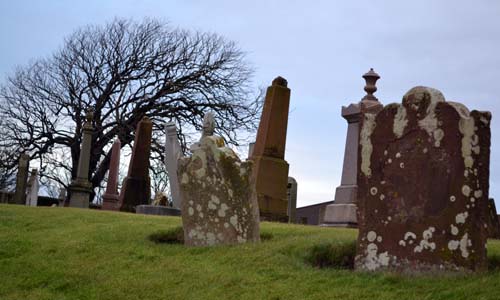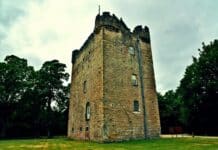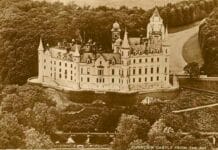ARE the ghosts of your ancestors spookier than those of strangers? This question went through my head as I traipsed around Girvan Old Street Burial Ground in Ayrshire, Scotland, last week looking to take spooky photos.

Visiting living relatives in Girvan for Christmas, I took the opportunity to swing by the village’s oldest cemetery to take some photos for this blog.
I don’t know much about Girvan Old Street Burial Ground but I think it is also called the Old Churchyard, though it’s not really near any church. I’ve wandered through the cemetery previously, having researched my family tree. The place is packed with the remains of my ancestors, including my 4th-great-grandfather, James Pitt, who drowned in a local river in 1857. I’ve always loved roaming through family cemeteries to see what facts I could find. But this time, I was more interested in it for the aesthetics of an ancient Scottish burial ground and try to take some creepy photos.
(As for my question, are ghosts of your ancestors spookier than strangers? I think any place you are familiar with cannot be spooky – it is the unknown the makes you uneasy – which is the cornerstone of spookiness. But having said that, I reckon if any of my dead relatives popped up as ghost in front of me, my pants would no less a shade of brown than they would have the apprarition been a stranger.)
Visiting Girvan Old Street Burial Ground
Arriving in Girvan by train from Glasgow on Thursday night before Christmas, I dropped my bags off at my B&B and went for a walk. The weather was reasonably pleasant for Scotland, so I moseyed around to Old Street to see if I could get some night shots of the cemetery. Not surprisingly, the gates were all locked and the photos I took from between the bars were poor. So I returned in the morning and here are the results.
Girvan has two other cemeteries, Doune Cemetery – a few hundred years old – and Byne Hill Cemetery, which is only about 40 years old. Those two are nicely set out in the rows and while Doune Cemetery has some interesting monuments, the Old Street Burial Ground is the most ancient and appealing with its odd-shaped moss-covered stones and statues.
You’ll see that while the stones are ancient and incredibly interesting – especially the skulls on the graves – the only spooky thing in the burial ground is some of the trees.
I imagine if I had been able to get into the burial ground at night, the photos would have been super spooky. But as they are, they are interesting and I am glad I have noted them for this blog.








As a Girvanite I grew up with the Legend of Sawney Bean.The story of Sawney Bean and the caves at Lendalfoot pass going towards Ballantrae was our own Bogey Man tales of the Area. a lot of the old people back in the day would say watch out on the road at Night as Sawney Bean would take a passing traveller and eat him, as a kid you would take note of the old one’s tales. But what added to the modern day stories was that Snibb Scott an old tramp from the area was believed to be living at the old caves where it was alleged bones were found in the caves at Lendalfoot but how much of an old wife’s tale it was, no one knows. I heard that passing bread vans would chuck a loaf off by the road side for Snibb and others would leave food for him. He was believed to be a Banker at one time who had lost his daughter and wife to a disease, and it sent him over the edge to live a life on the road apparently travelling between Girvan and Glasgow but always to return, this kept the tales of Sawney Bean alive as some people believed that Snibb Scott had turned out the same way. The caves have now been bricked up for many years but the local tales are still as large as ever… Very Spooky